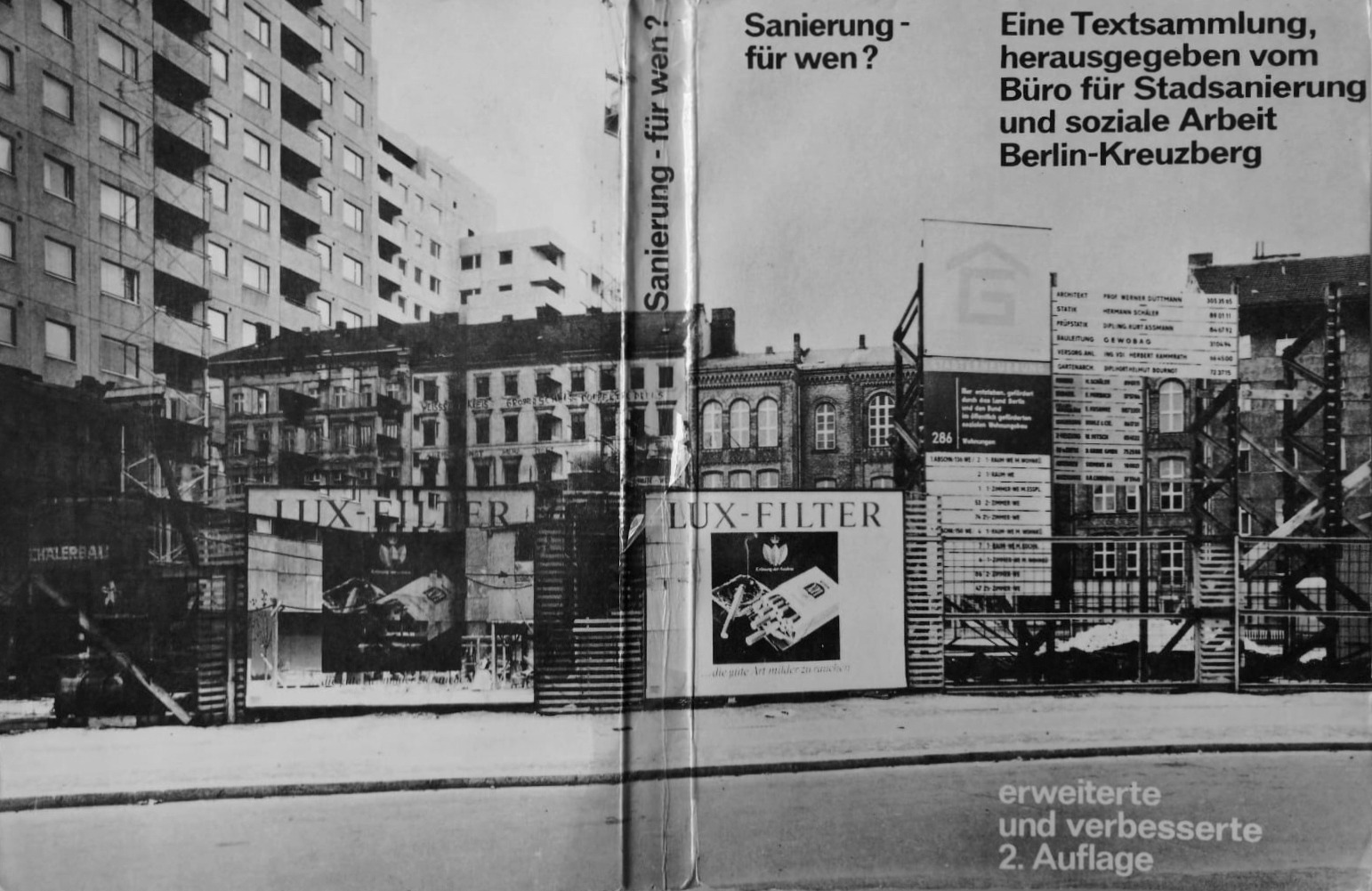PAST TALKS 2021
20 April 2021
West Berlin Marxist Architecture
Groups at the turn of the 1970s
ALESSANDRO TOTI
The Bartlett School of Architecture (UCL)
Respondent: Beata Labuhn (The Oslo School of Architecture and Design)
![]()
***
Giving Form to the Void. Brazilian
DAVIDE SACCONI
Architectural Association, London
Respondent: Ciro Miguel (ETH Zurich)
![]()
West Berlin Marxist Architecture
Groups at the turn of the 1970s
ALESSANDRO TOTI
The Bartlett School of Architecture (UCL)
Respondent: Beata Labuhn (The Oslo School of Architecture and Design)

In 1963 West Berlin city council
launched a gargantuan urban plan to clear 56.000 deteriorated houses mostly
inhabited by working-class communities, who would be relocated in costly, isolated
and substandard modernist estates. The consensus around this plan was
interrupted only in September 1968, when a group of Marxist architecture
students from the West Berlin Technical University denounced the classist
nature behind this urban transformation. Inspired by the surrounding
political uprisings and confronted with rising issues of unemployment and
exploitation, between the late 1960s and the early 1970s Marxist
architecture groups participated in the organisation of several groundbreaking
social and political activities. These were not limited to protests,
exhibitions and counter-seminars inside the Architecture Faculty, but included
the participation in a grassroots campaign challenging the West Berlin urban
plan and in the – possibly – world first radical architects' trade unions. For
the grassroots campaign, they rented and managed a space in an
about-to-be-cleared area, in which they hosted a series of political, cultural
and recreational activities to build community awareness and to oppose the
incoming redevelopment plans. On the other side, they also contributed to set
up a union of architecture workers, which allowed students and architects not
only to fight against unemployment, overwork and precariousness rapidly
spreading from the late 1960s, but also to coherently and originally connect
urban campaigns and industrial struggles. Throughout these and other
experiences, West Berlin Marxist architecture groups continuously discussed the
agency of their disciplinary knowledge and repetitively adapted it to fit their
social and political aims. In this way, they demonstrated how the relationship
between architecture and politics is not established once and for all, but can
always be transformed and radicalised through the intersection with most urgent
economic, social, cultural and environmental conflicts of the moment.
***
Giving Form to the Void. Brazilian
Modern Architecture and the Archetype of the Cover
DAVIDE SACCONI
Architectural Association, London
Respondent: Ciro Miguel (ETH Zurich)

In the extraordinary
variety and richness of Brazilian Modern architecture, a common trait emerges
with startling clarity: an obsession for the large span and the act of covering
the ground. From the abstract
surfaces of Oscar Niemeyer to the exposed concrete planes of João Batista
Vilanova Artigas, from the monumental gestures of Lina Bo Bardi to the self
built vaults of the Grupo Arquitetura Nova, from the technological sheds of
João Filgueira Lima to the territorial signs of Paulo Mendes da Rocha, the archetype
of the cover has been deployed in countless variations as a means of giving
form to a void.
Through this paradigmatic gesture, Brazilian architects assumed an ambiguous positions: on the one hand, they celebrated technique to serve the ideological promise of development; on the other hand, they used architectural form to propose modes of gathering, living and building that challenged a universal idea of progress and offered a resistance to the uncontrolled expansion of urbanisation. By looking at the formal and technical choices of some exemplary projects, the talk will discuss the key role played by the archetype of the cover in sublimating the contradictions generated by the unfolding of capital in modern Brazil.
Through this paradigmatic gesture, Brazilian architects assumed an ambiguous positions: on the one hand, they celebrated technique to serve the ideological promise of development; on the other hand, they used architectural form to propose modes of gathering, living and building that challenged a universal idea of progress and offered a resistance to the uncontrolled expansion of urbanisation. By looking at the formal and technical choices of some exemplary projects, the talk will discuss the key role played by the archetype of the cover in sublimating the contradictions generated by the unfolding of capital in modern Brazil.